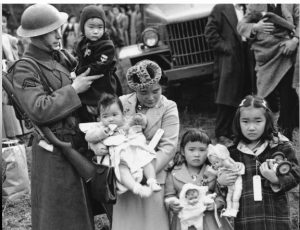
SAN FRANCISCO — Satsuki Ina was born behind barbed wire in a prison camp during World War II, the daughter of U.S. citizens forced from their home without due process and locked up for years following Japan’s attack on Pearl Harbor.Roughly 120,000 Japanese immigrants and Japanese-Americans were sent to desolate camps that dotted the West because the government claimed they might plot against the U.S. Thousands were elderly, disabled, children or infants too young to know the meaning of treason. Two-thirds were citizens.
And now, as survivors commemorate the 75th anniversary of the executive order that authorized their incarceration, they’re also speaking out to make sure that what happened to them doesn’t happen to Muslims, Latinos or other groups.
They’re alarmed by recent executive orders from President Donald Trump that limit travel and single out immigrants.
In January, Trump banned travelers from seven majority Muslim nations from entering the U.S., saying he wanted to thwart potential attackers from slipping into the country. A federal court halted the ban. Trump said at a news conference Thursday that he would issue a replacement order next week.